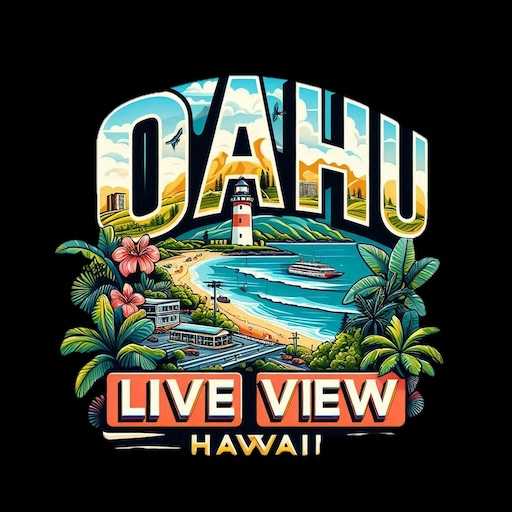Mikilua, Oahu Webcams
Mikilua FAA Webcam
Mikilua: A Hidden Gem in Oahu’s Historical Landscape
Mikilua, Oahu Webcams. Mikilua, nestled in the lush and serene Wai‘anae mountain range on the leeward coast of Oahu, is a place steeped in history, culture, and natural beauty. Although less renowned than some of its neighboring regions, Mikilua carries an enduring legacy that reflects the rich heritage of ancient Hawaiian life, the evolution brought by Western contact, and the resilience of its community. This account explores the multifaceted history of Mikilua, tracing its journey through the ages.
Ancient Hawaiian Life in Mikilua
Long before European contact, Mikilua was part of a network of ahupua‘a, or traditional Hawaiian land divisions. The ahupua‘a system was an ingenious model of sustainability, extending from the mountain summits to the sea and ensuring equitable access to resources for all residents. Mikilua benefited from this system, with fertile land and fresh water streams feeding agricultural activities that sustained the community.
The name “Mikilua” is thought to derive from the Hawaiian words meaning “double springs,” referring to the freshwater springs in the area. These springs were vital for supporting both agricultural and domestic needs. Taro, a staple crop, was cultivated in lo‘i (terraced fields), while breadfruit, sweet potatoes, and bananas thrived in the upland regions. Mikilua’s residents were also skilled fishers and gatherers, utilizing the ocean’s abundance to complement their diets.
The Wai‘anae mountain range itself was a spiritual landmark for the people of Mikilua. The peaks and valleys were considered sacred, serving as sites for heiau (temples) where rituals and offerings to the gods took place. These temples played a central role in community life, linking the land and its people with their spiritual beliefs.
The Arrival of Westerners and Missionary Influence
In the late 18th century, Western explorers, traders, and missionaries began to arrive in the Hawaiian Islands, bringing profound changes to traditional ways of life. Captain James Cook’s voyages in the Pacific opened the islands to increased interaction with the Western world, and Mikilua, like other parts of Oahu, experienced the effects of these encounters.
Missionaries introduced Christianity, Western-style education, and new agricultural techniques to Hawaiian communities. The Wai‘anae region, which encompassed Mikilua, became a site of missionary activity in the early 19th century. Churches and schools were established, providing opportunities for literacy and formal education. However, these changes also contributed to the gradual loss of traditional Hawaiian practices, language, and belief systems.
During this period, the Hawaiian Kingdom underwent significant social, political, and economic changes. The introduction of Western diseases had a devastating impact on the Native Hawaiian population, leading to dramatic declines in numbers. Despite these challenges, the people of Mikilua adapted to the changing times, blending elements of their traditional culture with new influences.
The Plantation Era and Agricultural Shifts
By the mid-19th century, sugarcane and pineapple plantations dominated the Hawaiian economy. Mikilua’s fertile lands and favorable climate made it an ideal location for agricultural development. Plantation agriculture introduced new crops and labor systems, transforming the region’s landscape and economy.
The plantation era also brought waves of immigrant laborers to Hawaii, including workers from China, Japan, Portugal, and the Philippines. These laborers contributed to the success of the plantations and brought diverse cultural traditions, languages, and cuisines to Mikilua and the surrounding areas. Over time, this multicultural blending enriched the community’s identity, creating a unique social fabric that endures to this day.
While plantations provided economic opportunities, they also altered the natural environment. Forests were cleared, and streams were diverted to irrigate fields, disrupting ecosystems. Many Native Hawaiians faced displacement from their ancestral lands, leading to tensions and economic disparities.
Modern Developments and Community Resilience
In the 20th century, Mikilua underwent further transformations as Hawaii transitioned from an agricultural economy to one centered on tourism, the military, and urban development. The construction of roads and infrastructure improved connectivity, bringing Mikilua closer to urban centers like Honolulu. However, this development also brought challenges, including concerns about preserving the region’s natural and cultural heritage.
Despite these changes, Mikilua has retained much of its rural charm and close-knit community atmosphere. Efforts to protect the area’s natural beauty and cultural traditions have gained momentum in recent decades. Community members and organizations have worked to restore native ecosystems, promote sustainable land use, and pass down traditional knowledge to younger generations.
Mikilua Today: A Place of Hidden Treasures
Today, Mikilua remains a relatively quiet and unspoiled corner of Oahu, offering a glimpse into the island’s past and present. Its rolling landscapes, abundant greenery, and pristine water sources are a testament to the natural riches that have sustained its residents for centuries.
Visitors to Mikilua can explore the Wai‘anae mountain trails, learn about Hawaiian history and culture, and connect with the spirit of aloha that defines the community. The preservation of Mikilua’s cultural and natural heritage is a source of pride for its residents, who strive to balance progress with the values of mālama ‘āina (caring for the land).
A Legacy of Strength and Connection
Mikilua’s history is a story of resilience, adaptation, and deep connection to the land and sea. From its roots as a thriving Hawaiian settlement to its role in Hawaii’s agricultural and cultural evolution, Mikilua has remained steadfast in honoring its heritage. The region stands as a reminder of the beauty and strength of Hawaii’s people, past and present.
As visitors and residents alike walk its trails, feel the cool breeze of the trade winds, and marvel at the surrounding beauty, they are reminded of the enduring spirit of Mikilua. It is a place where the echoes of history blend harmoniously with the promise of the future, preserving the essence of what makes Hawaii truly special.
For more information, visit the official Oahu website.
